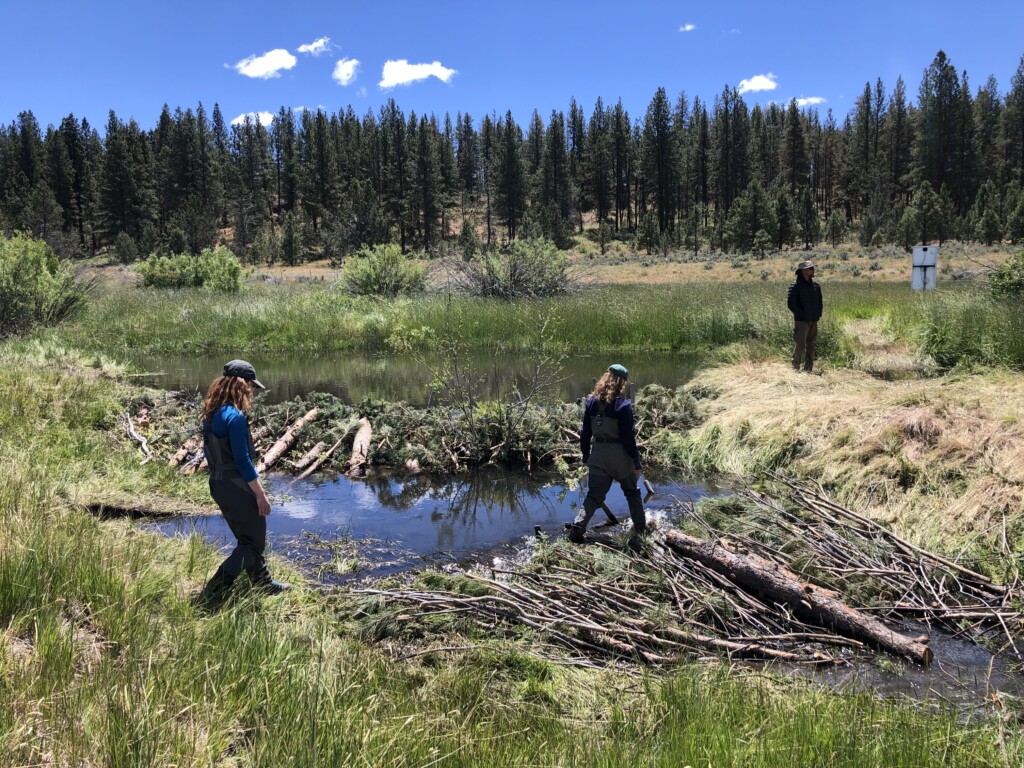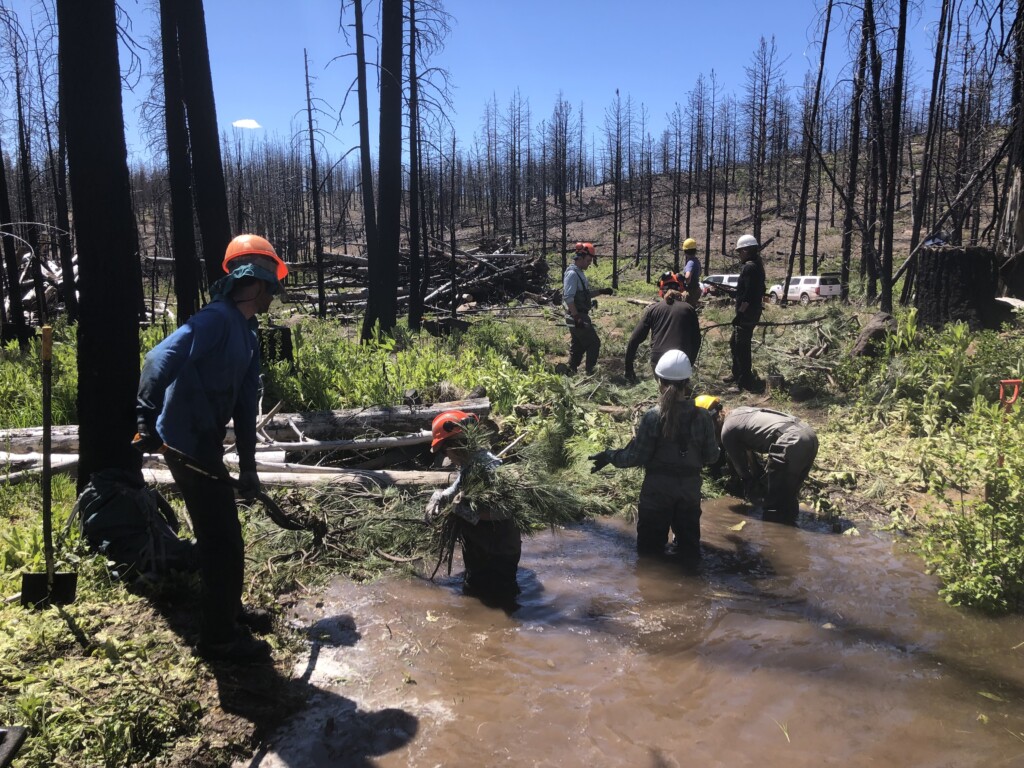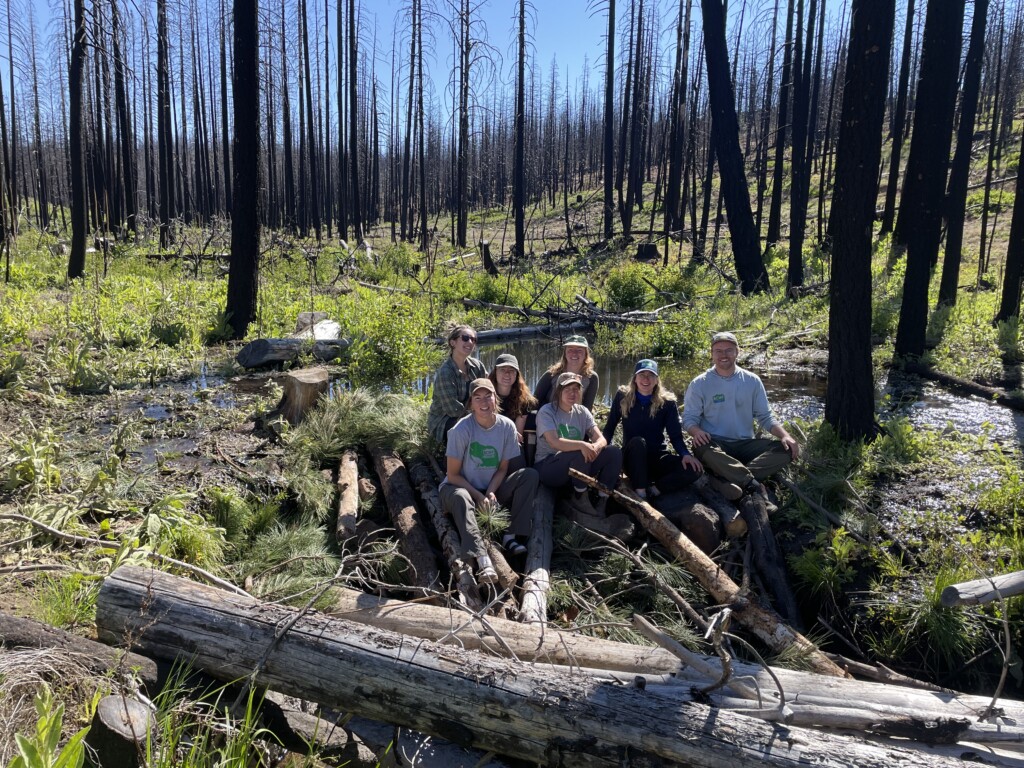Advancing Watershed Security Through Training
Investment in watershed security training is vital to the future of our province. The B.C. Wildlife Federation’s Watershed Team is continuously learning and improving our knowledge and skills base so that we can lead innovative, effective projects that restore habitat and prevent or mitigate the impacts of drought, fire, and flood.
In June, members of BCWF’s Watershed Team traveled to Bly, Oregon for an intensive week of training in Low-Tech Process-Based Restoration (LTPBR). This training provided invaluable mentorship and guidance from Kevin Swift and his team at Swift Water Design, along with experts from Trout Unlimited and Nature’s Engineers.

The team received exceptional mentorship and guidance from industry leaders, gaining practical insights into LTPBR techniques. This training will be invaluable as our team prepares to install 100 Beaver Dam Analogues (BDAs) over the next two years, as part of BCWF’s 10,000 Wetlands Project.
With tens of thousands of low-tech structures already built in the US, this international knowledge-sharing workshop was crucial for our team as we embark on constructing our first 100 structures in B.C. The training included visits to project sites in the Klamath Basin at various stages of restoration, demonstrating site selection, project design, navigating regulatory frameworks, identifying source problems, monitoring, adaptive management, and project evolution. Each day included hands-on experience building BDA structures to achieve various restoration goals.
The BDA structures are designed to aid in post-fire recovery, enhance habitat value, and increase biodiversity. Adding BDA structures to a stream reach creates more complexity as water pools upstream of the structure and often flows into new areas. Dispersed flows widen the reach of the water and create more aquatic habitat availability and increased ground water retention. Groundwater recharge is vital for both preventing large-scale fires and recovering ecosystems after a fire. BDA structures also act like speed bumps to slow the flow of water, keeping water in the stream for longer and reducing the force that can cause streams to erode and degrade. Slowing the flow of water also helps capture and settle sediments and improve water quality. Beaver dams and BDAs create a diverse and healthy landscape that is better able to adapt, mitigate and recover from disturbances.
Our team is excited to bring this knowledge back to British Columbia, share it with project partners, and implement it at five project sites across the province this field season. With the skills and insights gained from this training, we are ready to build like beavers and contribute to the restoration of degraded watersheds.



About BCWF 10,000 Wetlands Project:
In early 2023, the B.C. Wildlife Federation launched 10,000 Wetlands, an ambitious project focused on beaver-based restoration. The 10,000 Wetlands project is designed to confront environmental challenges through installing 100 Beaver Dam Analogues (BDAs) across the province. By partnering with First Nations, Indigenous groups, and environmental NGOs, our overall aim is to kickstart the creation and restoration of over 10,000 wetlands province-wide. The BCWF’s 10,000 Wetlands project is a significant step forward in the Federation’s overall efforts to restore and enhance wetland ecosystems, promote biodiversity, and improve watershed resilience through nature-based solutions.
